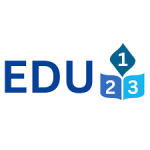As technology becomes a bigger part of daily life, schools are beginning to rethink how they teach. One big question is whether textbooks should be replaced with digital content. While some schools continue to rely on printed books, others — including some modern boarding schools in mussoorie — are moving toward tablets, e-books, and online learning tools.
The shift to digital learning has both supporters and critics. To understand if this change is helpful, we need to look at the pros and cons of using digital content in place of traditional textbooks.
Benefits of Digital Content in Education
Digital content offers several advantages that can improve both teaching and learning:
1. Always Up-to-Date
- Printed textbooks can become outdated in a few years
- Digital content is easy to update with the latest facts, data, and discoveries
- Students get access to current and relevant information
2. Interactive Learning
- Digital tools often include videos, quizzes, and animations
- These features help students understand complex topics more easily
- Learning becomes more engaging and fun
3. Easy to Carry and Access
- One device can hold hundreds of books and resources
- Students don’t have to carry heavy bags every day
- Content can be accessed anytime, even outside of school
4. Personalized Learning
- Some apps and platforms adjust content based on a student’s progress
- Students can learn at their own pace and revisit topics when needed
- It helps both fast and slow learners succeed
5. Eco-Friendly
- Digital learning reduces the need for paper
- It helps save trees and cut down on printing waste
Challenges of Replacing Textbooks
Despite its benefits, switching completely to digital content also brings some challenges:
1. Screen Time Issues
- Long hours in front of a screen can cause eye strain and headaches
- Students may become distracted by notifications or non-educational apps
- Managing healthy screen time becomes important
2. Access & Affordability
- Not all students have access to devices or fast internet at home
- Buying tablets or laptops may not be affordable for every family
- Digital learning can increase the gap between privileged and underprivileged students
3. Technical Problems
- Devices can crash or have software issues
- Students may lose access during power cuts or connectivity problems
- Teachers and students need proper training to use digital tools effectively
4. Lack of Writing Practice
- Writing in notebooks improves memory and handwriting
- Too much typing may reduce students' ability to write clearly and quickly by hand
- Handwriting is still important for exams and note-taking
Finding the Right Balance
Rather than completely replacing textbooks, schools can consider a blended learning approach. This means using both printed books and digital content in a balanced way.
Here’s how schools can do it:
- Use textbooks for basic reading and writing tasks
- Introduce digital content for visual explanations and interactive exercises
- Allow students to access online learning platforms at home for revision
- Train teachers to use both methods effectively
This approach offers the best of both worlds—reliable textbooks and dynamic digital resources.
Moving Forward
Digital content is clearly a part of the future of education, but textbooks still have value. The goal should not be to replace one with the other completely, but to combine both in a smart and student-friendly way.
As education continues to evolve, schools must focus on what helps students learn best—whether it's through the pages of a book or the screen of a tablet. The key is balance, accessibility, and keeping the student’s needs at the center of every decision.





.png)
Comments